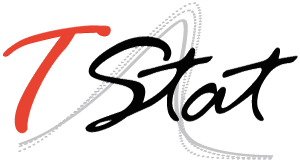PROGRAM
SESSION I: GETTING TO KNOW YOUR DATA USING GRAPHS
- Introduction
- Why graphs are an important tool for exploratory data analysis
- Data management tools for graphing data
- The example dataset
- How to create and edit basic graphs using Stata
- How to create and edit graphs with dialog boxes
- How to edit graphs with the Graph Editor
- How to create and edit graphs with commands
- Some basic graphs
- Graphs for one continuous variable
- Graphs for one categorical variable
- Graphs for two continuous variables
- Graphs for two categorical variables
- Graphs for one continuous and one categorical variable
- Graphs for many variables
- Storing, saving, and exporting graphs
- Storing graphs in memory
- Saving graphs to disk
- Exporting graphs in .png format
- Automating the process: Looping and saving
SESSION II: UNDERSTANDING YOUR RESULTS USING GRAPHS
- Introduction
- Model checking using graphs
- Using the predict command
- Checking model assumptions
- Checking the normality assumption
- Checking the linearity assumption
- Checking the homoskedasticity assumption
- Identifying outliers and influential observations
- Visualizing the results of your models
- Using the margins and marginsplot commands
- A brief review of factor variables
- Categorical independent variables
- Multiple categorical independent variables
- Continuous independent variables
- Continuous and categorical independent variables
- Average response versus response at average: The atmeans option
- Contrasts of margin
- Marginal effects: Margins of derivatives of responses
- Using contour plots to visualize continuous-by-continuous interactions
- Using the margins and marginsplot commands
SESSION III: FORMATTING GRAPHS FOR PUBLICATION
- Introduction
- Formatting titles, legends, and text boxes
- Formatting titles
- Formatting legends
- Adding text boxes
- Using italics, bold, superscripts, and subscripts
- Using specialty characters
- Using different fonts
- Formatting numbers
- Formatting axes, axis labels, ticks, gridlines, graph, and plot regions
- Formatting categorical axis labels
- Formatting the x and y axes
- Formatting the x- and y-axis labels
- Formatting major and minor ticks and gridlines
- Adding reference lines
- Formatting the graph and plot regions
- Formatting major and minor ticks and gridlines
- Adding reference lines
- Formatting the graph and plot regions
- Controlling the aspect ratio and size of graphs
- Using schemes to change the overall look of graphs
- Using built-in schemes
- Defining your own schemes
- Recording and saving edits in the Graph Editor
© Copyright 1996–2025 StataCorp LLC
SESSION IV: ADVANCED GRAPHS: HOW TO LAYER AND COMBINE MULTIPLE GRAPHS
- Introduction
- Layering multiple graphs with the graph twoway command
- Basic layered graphs with one y axis
- Advanced layered graphs with one y axis
- Basic layered graphs with two y axes
- Advanced layered graphs with two y axes
- Layering multiple graphs with the addplot() option
- Basic
- Advanced
- Creating multiple graphs with the by() option
- Combining different graphs with the graph combine command
- Basics: Making a table of separate graphs
- Advanced: Making a single complex graph from separate graphs
- Exporting graphs for publication
- Exporting graphs in pixel-based formats
- Exporting graphs in vector-based formats
Note: The previous four sessions constitute the core material of the course. The following material is optional and introduces user-written graphic commands and useful data management tools.
Bonus Material
- Introduction
- User-written graph commands
-
- The Statistical Software Components (SSC) archive
- The coefplot package by Ben Jann
3. How to write a simple graphics wrapper command
4. How to create animated graphs
5. Some fun graphs
-
- How to create normal curves with shaded tails
- How to show scatterplots with regression lines and residuals
- How to add normal curves to regression lines
- How to graph a histogram with a box plot
Appendix: Data management tools useful for graphing data
- The destring and encode commands
- The recode command
- The tabulate command with the generate() option
- The egen command
- The contract and collapse commands
- The statsby command
- The snapshot command
- The reshape command
- Macros and loops
- Extracting value labels to local macros
Note: There is a one-week break between the posting of Session 2 and 3; however, course leaders are available for discussion.

